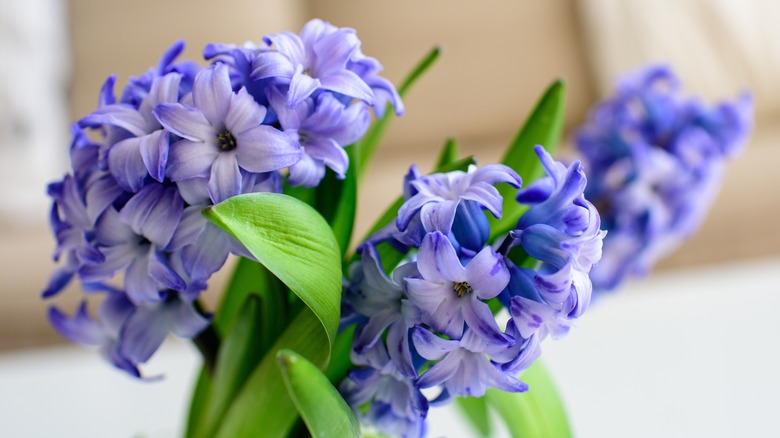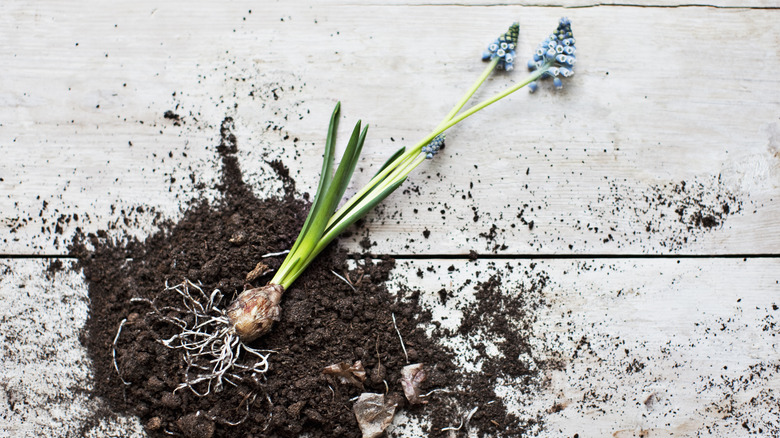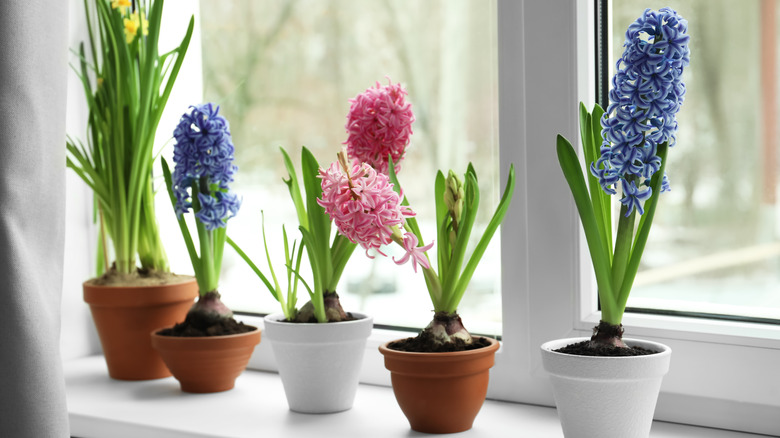The Biggest Downsides To Growing Hyacinths Indoors
The hyacinth flower (Hyacinthus orientalis) is a cheery perennial known for its colorful blooms and strong fragrance. Often they are used outdoors as border plants, but they can bring a lot of color to the inside of your home as well. Hyacinths are fairly easy to grow so long as their light, soil, and sun needs are met. The biggest downside to growing hyacinths indoors is their propensity for bulb rot and drooping. However, with the right care, you can successfully grow them inside.
Hyacinths grow from bulbs, with sizes 16 cm through 19 cm being the best for indoor planting. Gardenia.net recommends keeping the bulbs in cold and dark conditions for 8 to 16 weeks before planting. Though these flowers are springtime bloomers, they begin to root and grow in the winter months when outside. Forcing them to grow indoors is possible, but not without challenges. Maintaining the right room temperature and soil moisture level are the keys to a gorgeous potted hyacinth.
They are prone to rotting
Bulb rot occurs when there's too much moisture in the soil. Excessive watering and high humidity create the necessary conditions for fungal and bacterial infections to thrive. Many of these infections cause brown spots and fuzzy gray fungus. If left untreated, bulb rot will kill the plant. So if your home has high humidity, you may struggle to grow healthy hyacinths. A dehumidifier will help you keep the air dry. Overwatering is an easy mistake to make, but equally easy to avoid once you start a routine.
In addition to their tendency to rot, hyacinths are top-heavy flowers that often droop. Indoor hyacinths also droop when the temperature is too warm. Rooms that rest at a temperature above 80 degrees are too hot for these flowers. Proximity to heat sources like radiators will also create instability and hot spots that may cause drooping. A window sill that receives ample sun and cool air is the best spot for this otherwise hardy plant.
How to successfully care for indoor hyacinths
The best way to care for a hyacinth flower is by monitoring its moisture level and meeting its other growing requirements. You can beat bulb rot by allowing the soil to dry out in between waterings. Dip a clean finger into the soil to check for moisture below the surface. Should it feel dry and slightly brittle, it's okay to water.
Your indoor hyacinth should sit where it can receive direct sunlight. Some shade is fine, but it would thrive atop a windowsill. Be sure to turn the pots regularly so every part of the plant receives ample sunlight. Hyacinth will lean if one side gets more light than the other. Once flowers begin to grow, insert a stake about a quarter of an inch away from the stem. Press it down four inches into the soil. The top of the stake should end just underneath the flower. Tie the stem to the stake with a loose knot to prevent the flower from drooping.


